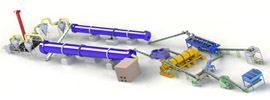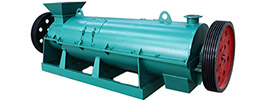I. Material Preparation & Classification
1. Compostable Materials
- Recommended Materials: Fruit/vegetable scraps, tea leaves, coffee grounds, eggshells (washed & dried), fallen leaves, wood chips, shredded newspaper.
- Avoid: Meat/fish scraps, grease/oils, bones (attract pests), plastics/metals (non-degradable), diseased plants (may spread pathogens).
2. Tools & Containers
- Containers: Plastic bins, burlap sacks, or compost tumblers (ensure ventilation & sealing).
- Accessories: Shovel, thermometer, spray bottle (for moisture control).
II. Core Process: Step-by-Step Instructions
1. Carbon-Nitrogen Ratio (C:N) Balancing
- Ideal Ratio: 25-30:1 (kitchen waste is nitrogen-rich; add carbon sources to balance).
- Practical Method:
- Layering Technique:
- Bottom layer: 5cm soil or mature compost.
- Alternate layers: 2cm kitchen waste (nitrogen) + 2cm carbon material (e.g., wood chips, leaves).
- Proportion Guide: 1 part kitchen waste : 0.5-1 part carbon material.
2. Fermentation Environment Control
- Temperature:
- Target: 55-65°C (kills pathogens).
- Adjustment: Turn pile every 2-3 days in summer; insulate with old blankets in winter.
- Moisture:
- Target: 50-60% (like damp sponge).
- Adjustment: Spray water if dry; add dry wood chips if soggy.
- Aeration: Turn pile regularly (every 2-3 days) to introduce oxygen.
3. Accelerating Fermentation
- Microbial Additives:
- Recommended: Effective Microorganisms (EM) or compost starter (follow dosage instructions).
- Effect: Reduces fermentation time to 4-6 weeks (vs. 2-3 months naturally).
- Liquid Fertilizer:
- Rice Water: Ferment sealed for 1-2 weeks, dilute 10x.
- Fruit Peel Enzyme: Peels:sugar:water = 3:1:10, ferment 3-6 months, dilute 50-100x.
4. Maturity Check & Application
- Signs of Ready Compost:
- Appearance: Dark brown, crumbly texture.
- Odor: Earthy smell (no foul odors).
- Temperature: Center cools to ambient temperature.
- Usage:
- Soil Amendment: Mix 10-20% into soil.
- Top Dressing: Bury lightly around plant roots (avoid direct contact).
- Caution: Unfinished compost may harm plants; ensure full decomposition.
III. Common Issues & Solutions
1. Odor & Pest Control
- Causes: Anaerobic conditions (poor aeration) or excess moisture.
- Solutions:
- Add carbon material (e.g., wood chips).
- Turn pile frequently to improve airflow.
- Cover with citrus peels or coffee grounds to mask odors.
2. Slow Fermentation
- Causes: Imbalanced C:N ratio, improper moisture, or lack of microbes.
- Solutions:
- Adjust carbon content (add wood chips/newspaper).
- Spray water or add dry material to regulate moisture.
- Add EM bacteria or compost starter.
3. High Salt Content
- Risk: Excess salt from kitchen waste may cause soil salinization.
- Mitigation:
- Mix with salt-free carbon materials (leaves, wood chips).
- Periodically rinse soil with water if salts accumulate.
IV. Practical Examples for Home Composting
1. Small-Scale Bin Composting
- Steps:
- Bottom layer: 5cm soil + EM bacteria.
- Alternate layers: 2cm kitchen waste + 2cm wood chips, spray lightly with water.
- Top layer: 5cm soil, seal bin.
- Turn every 3 days; compost ready in 4-6 weeks.
2. Bokashi Composting Method
- Steps:
- Line bin bottom with newspaper + EM.
- Add kitchen waste in layers, sprinkling EM between layers.
- Seal tightly; vent weekly to release gas.
- Collect liquid fertilizer (dilute 50x for plants).
- After 2-3 months, mix solid compost with soil.
V. Scientific Principles & Environmental Benefits
1. Decomposition Process
- Microbial Action: Aerobic bacteria break down organics, generating heat (55-65°C) to kill pathogens.
- Nutrient Conversion: Carbohydrates → CO₂ + water; proteins → ammonia → nitrates (plant-absorbable).
2. Eco-Friendly Impact
- Waste Reduction: Kitchen waste (50%+ of household trash) diverts from landfills.
- Soil Health: Organic compost boosts soil fertility, structure, and microbial activity.
This guide provides a systematic approach to transforming kitchen waste into nutrient-rich fertilizer, promoting sustainability while enhancing garden productivity.
 Send us a Email
Send us a Email Wulong Industrial Cluster
Wulong Industrial Cluster Have any question?
Have any question?



















